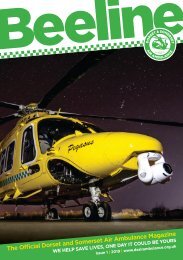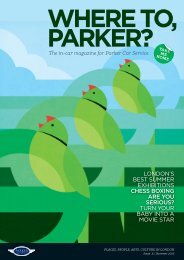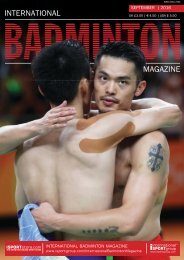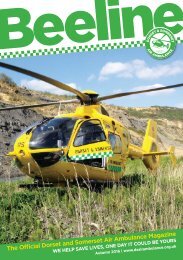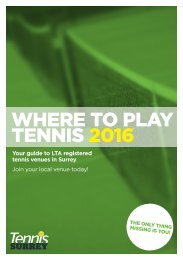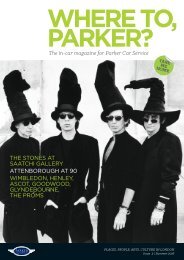Surbiton_Trophy_Programme_2017
Create successful ePaper yourself
Turn your PDF publications into a flip-book with our unique Google optimized e-Paper software.
different eras<br />
Prize money<br />
Since he turned professional in 1998, Roger<br />
Federer has won over US$104 million in prize<br />
money and much, much more in endorsements<br />
and sponsorship. Forbes magazine estimates that<br />
in 2016 alone he banked $60 million thanks to<br />
various deals with Nike, Rolex, Wilson, Mercedes-<br />
Benz, Moet & Chandon, Netjets, Lindt and Credit<br />
Suisse.<br />
Compare that to Rod Laver who won all four<br />
Grand Slams in 1962 and, for his efforts, received<br />
total prize money of exactly… zero. Yes, zero,<br />
because it was before the arrival of professional<br />
tennis.<br />
In 1947, after reaching the final of the<br />
Wimbledon doubles, Mottram was awarded a £10<br />
Harrods gift voucher. “But you had to spend it on<br />
sports clothing or luxury goods,” he remembers.<br />
“You couldn’t buy food with it.”<br />
For her two victories in the British<br />
Championships, Hughesman received a £5 gift<br />
voucher each time. “It was redeemable in several<br />
shops,” she says. “Sometimes tournaments would<br />
give us money to pay hotel bills. So we’d stay in<br />
really small hotels and keep the spare money.”<br />
Anti-doping<br />
Last year the International Tennis Federation<br />
carried out just under 5,000 anti-doping tests,<br />
around 2,600 of them on urine and 2,300 on blood.<br />
But drug testing didn’t exist in tennis until<br />
1993. Back in the 1940s, the only illegal substances<br />
players had to worry about was when they tried to<br />
get through customs with an extra bottle of booze<br />
and more than their allocated amount of Golden<br />
Virginia.<br />
Diet and drink<br />
Glycogen stores, vitamin<br />
supplements, amino acids,<br />
glycaemic indices, protein shakes,<br />
urine colour charts… modern<br />
athletes take sports nutrition more<br />
seriously than ever before.<br />
Rewind the clock to the years after<br />
World War II, however, and rationing<br />
in Britain was so tight that athletes<br />
would happily eat anything they could<br />
get their hands on.<br />
“It was a question of getting what<br />
“We left Heathrow on a<br />
Stratocruiser. It was two<br />
hours to Gander in Ireland;<br />
11 to Halifax in Newfoundland;<br />
and another six and a half<br />
hours to New York.”<br />
1947 Wimbledon doubles finalist<br />
Tony Mottram<br />
food was available,” says Mottram. “There was still<br />
rationing into the 1950s. It was very plain food. In<br />
the 1940s the Americans used to bring their own<br />
steaks over because you couldn’t get them here<br />
then. They’d put the meat in the deep freeze at the<br />
hotel.”<br />
Hydration during play was barely a<br />
consideration. “It was considered bad if you drank<br />
water during matches because it might give you<br />
a stitch,” explains Mottram. “All we did was wet<br />
our mouths with a tiny bit of water. Our Davis<br />
Cup captain was a qualified doctor and we never<br />
questioned that.”<br />
Travel<br />
The carbon footprint of professional<br />
tennis is enormous. With the ATP and<br />
WTA staging almost 130 main-tour<br />
tournaments on six continents, it’s<br />
impossible for players not to rack<br />
up the air miles. “By the end of<br />
your career you’ve lost thousands<br />
and thousands of days of your life<br />
travelling,” Spanish player Tommy<br />
Robredo once said.<br />
22 Aegon surbiton trophy <strong>2017</strong>




